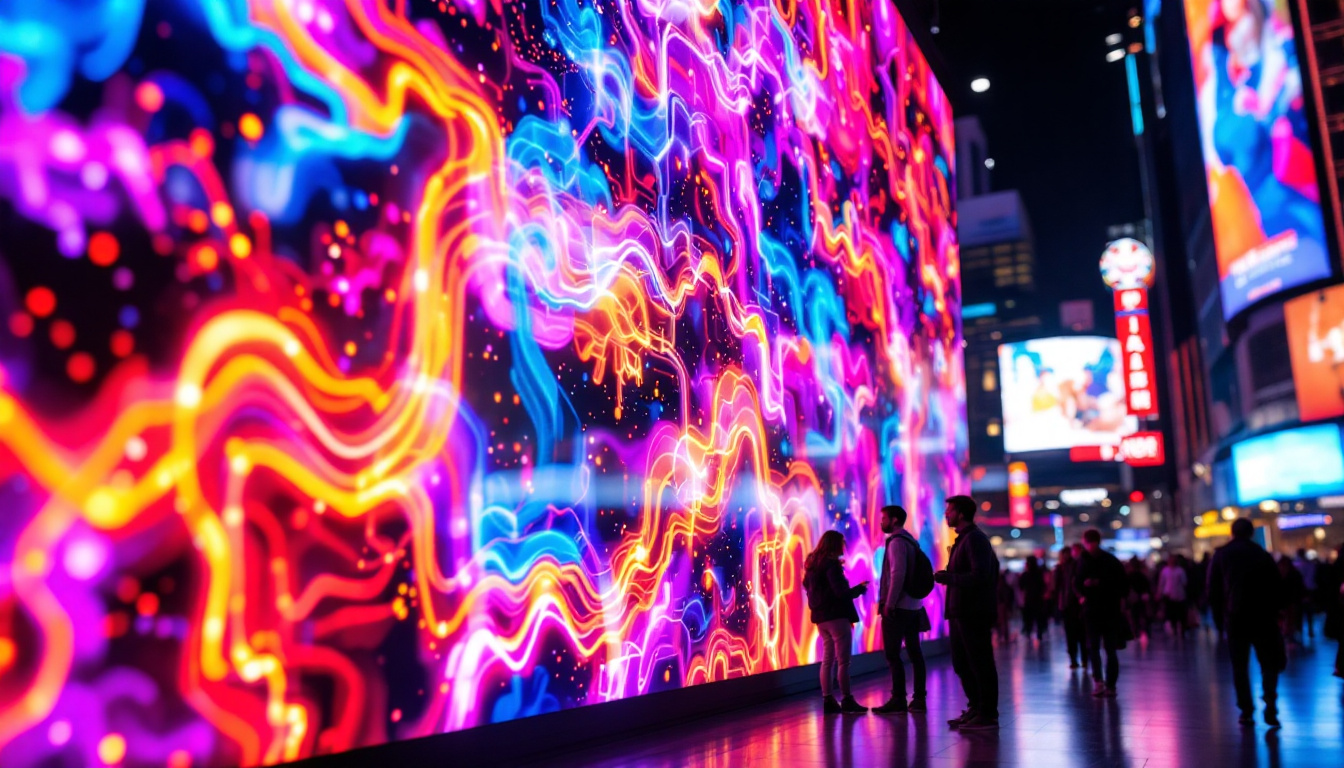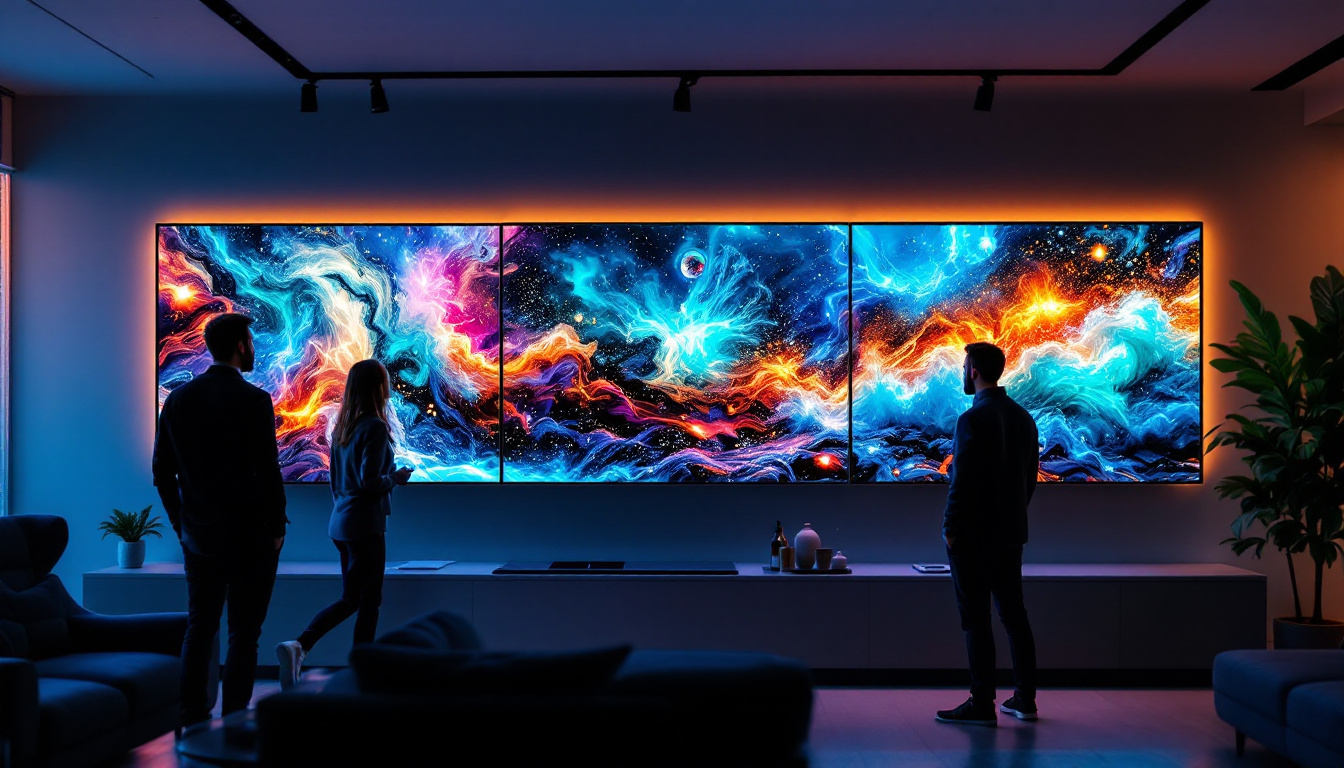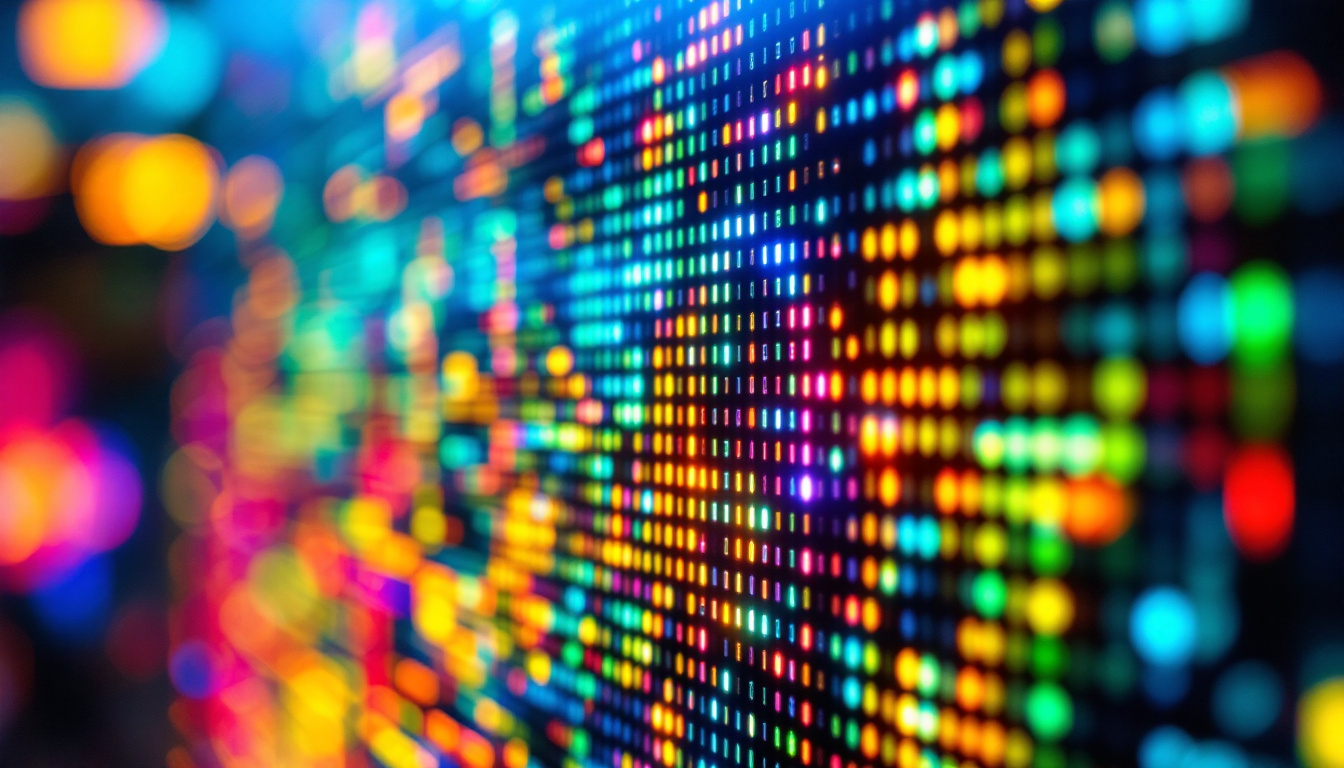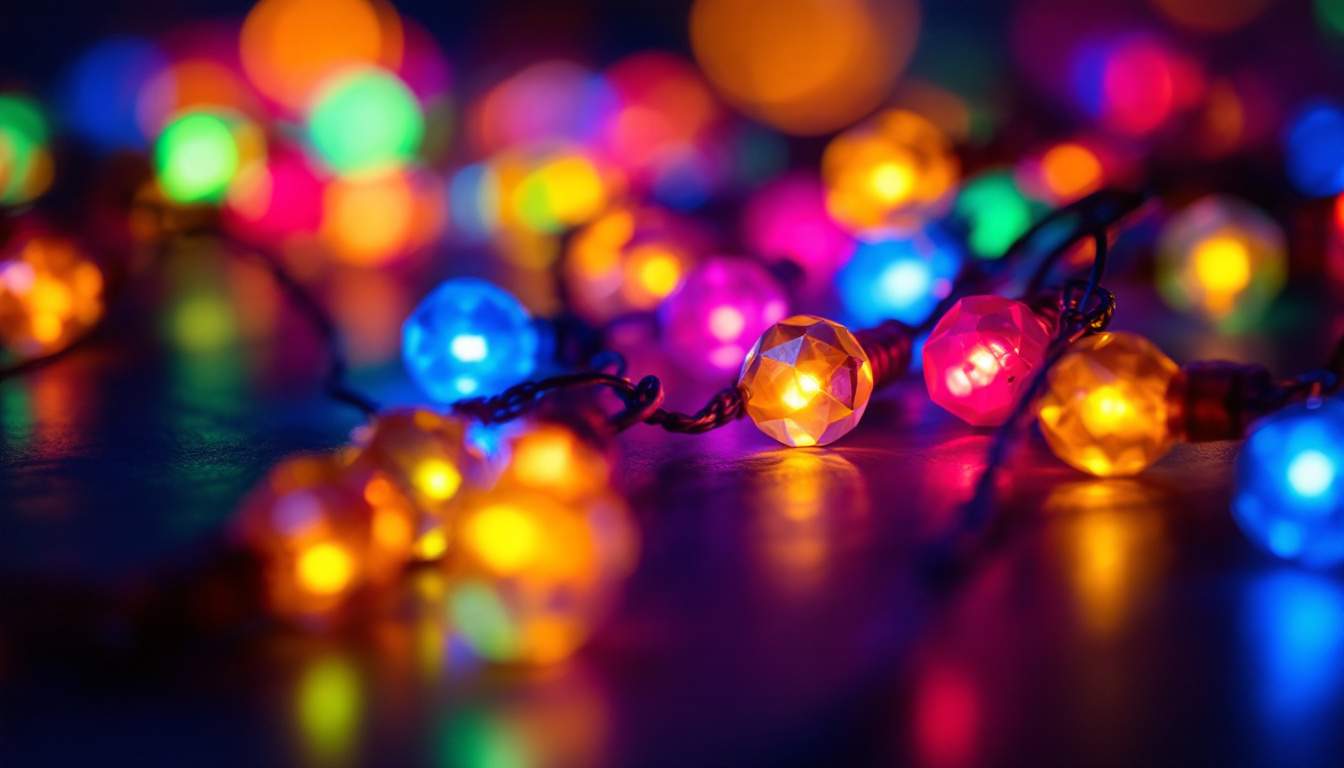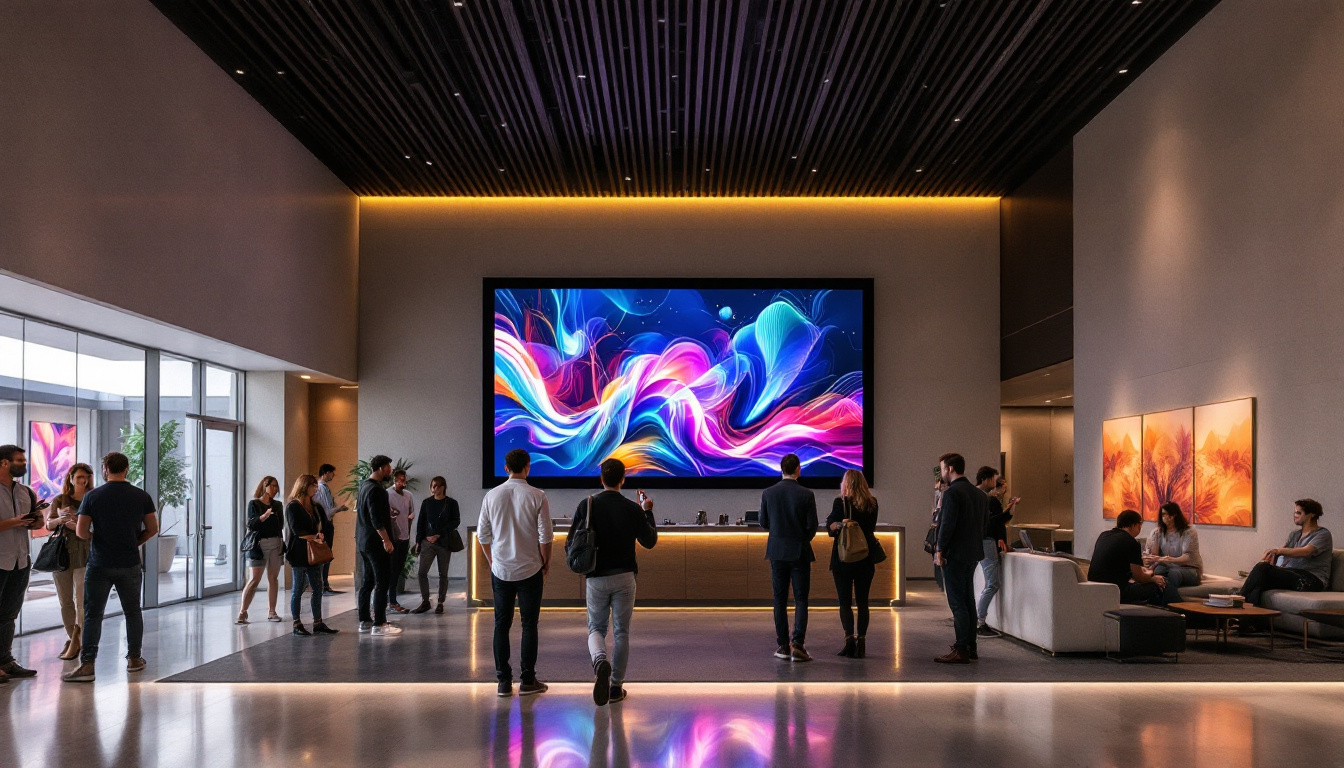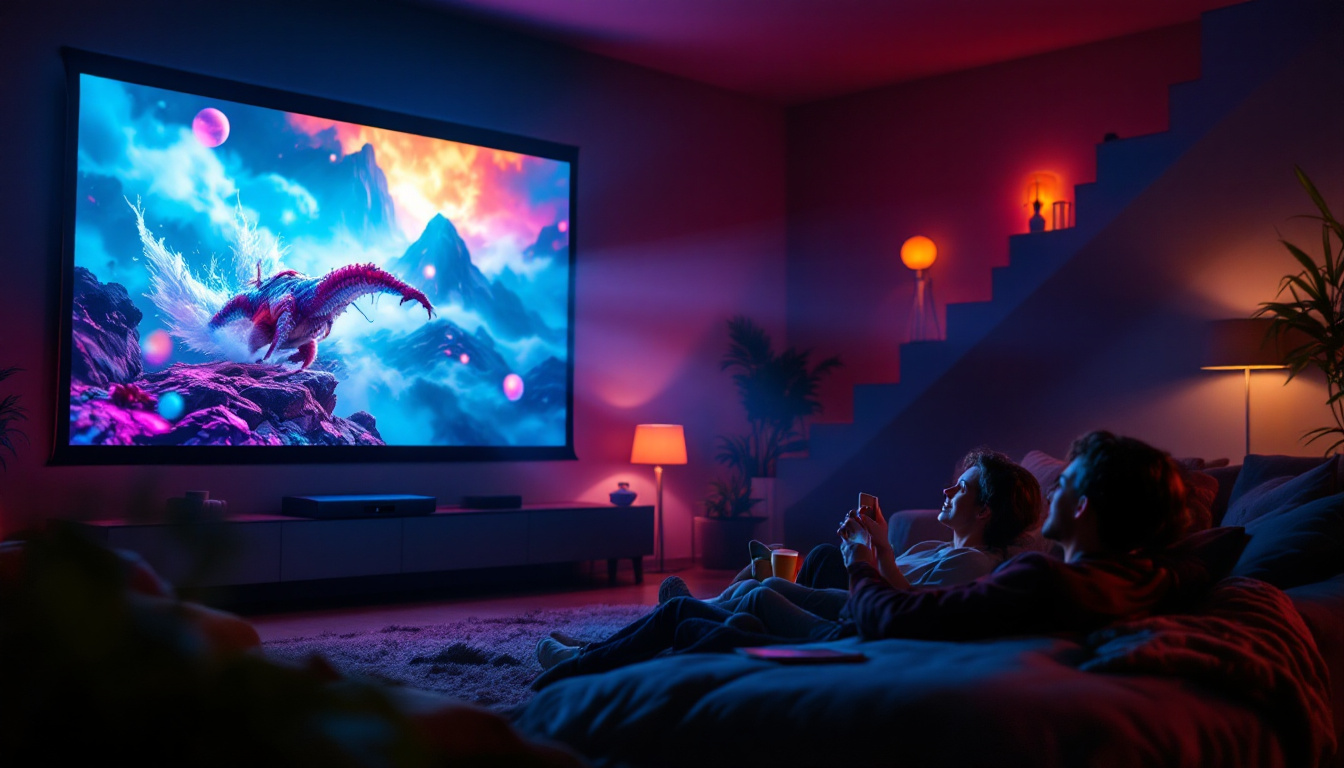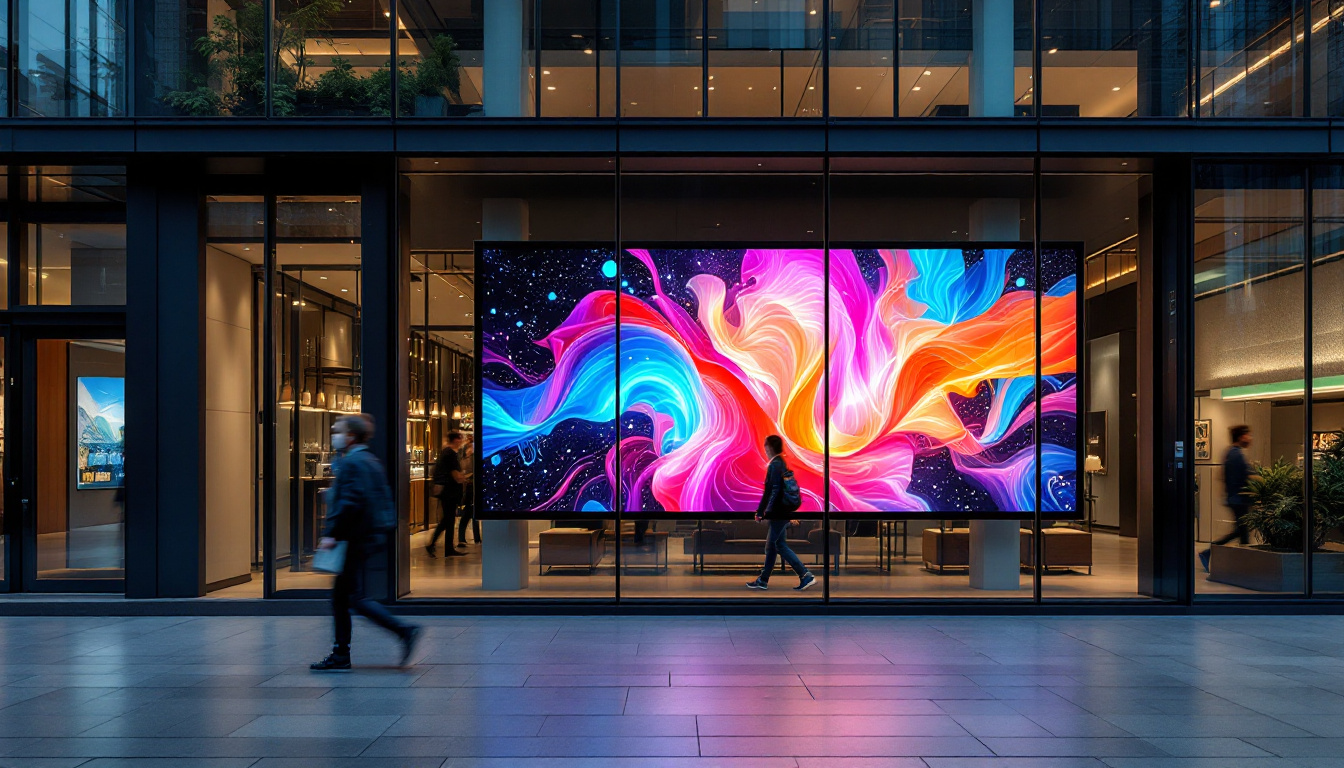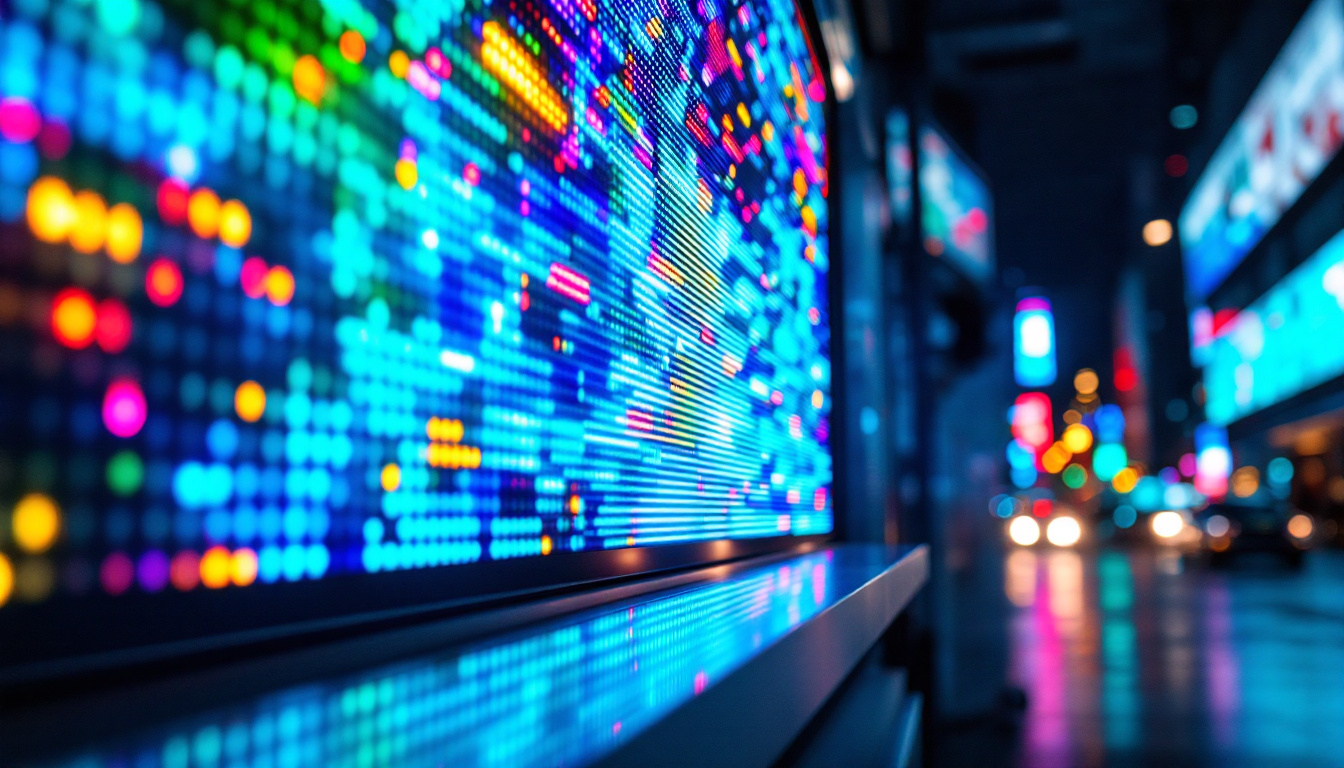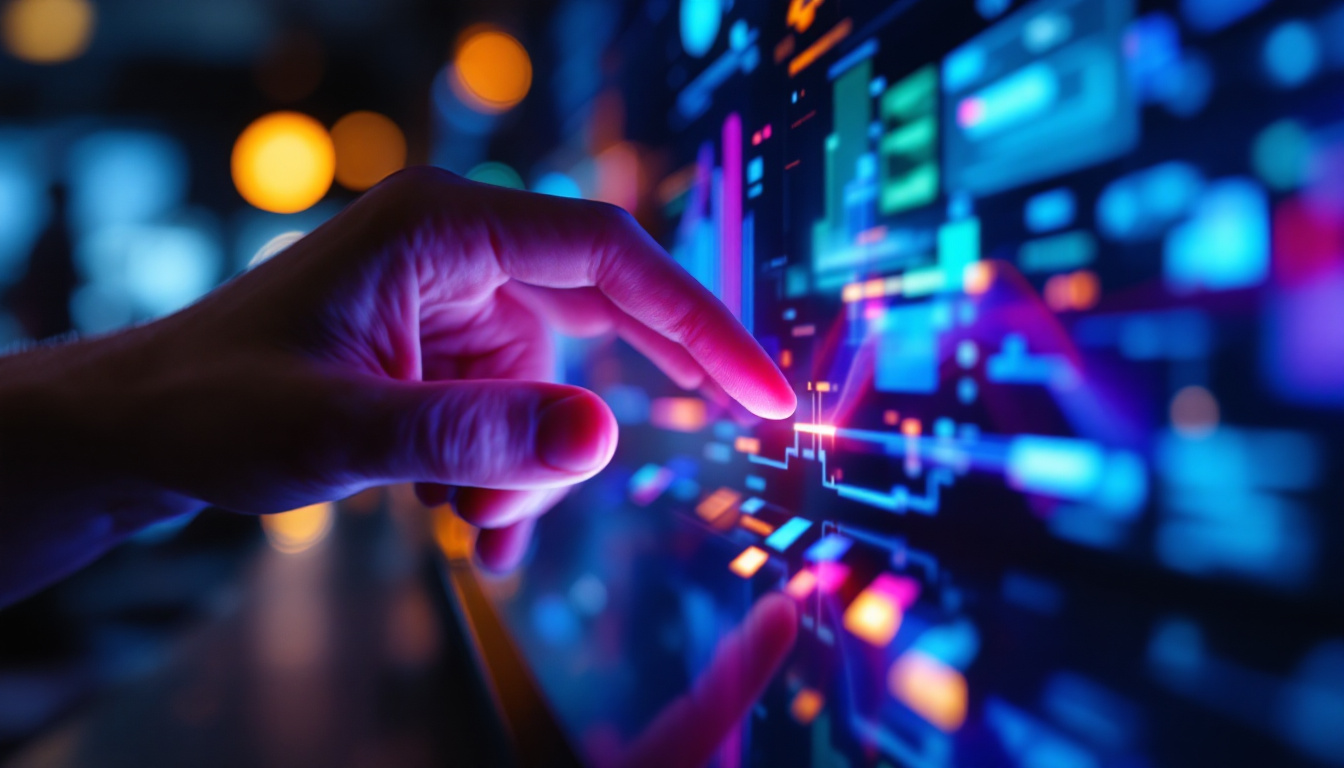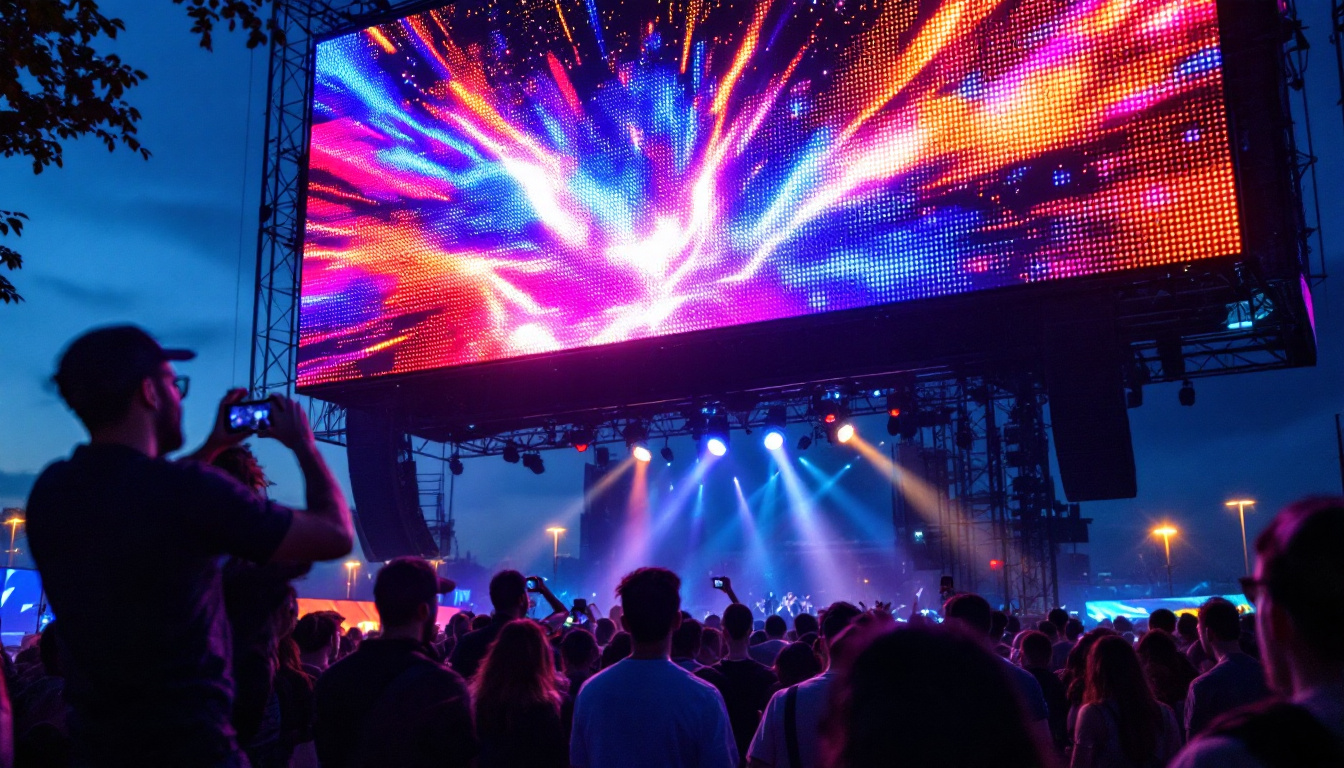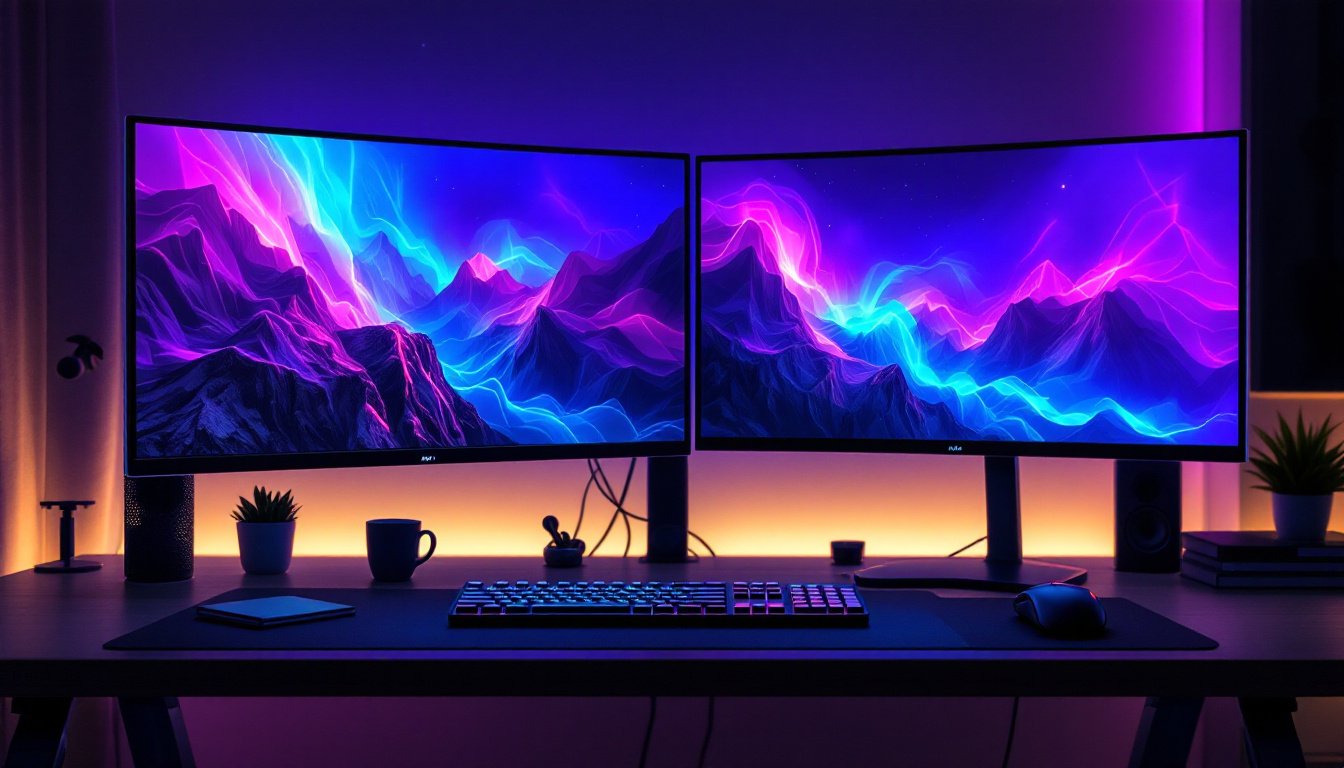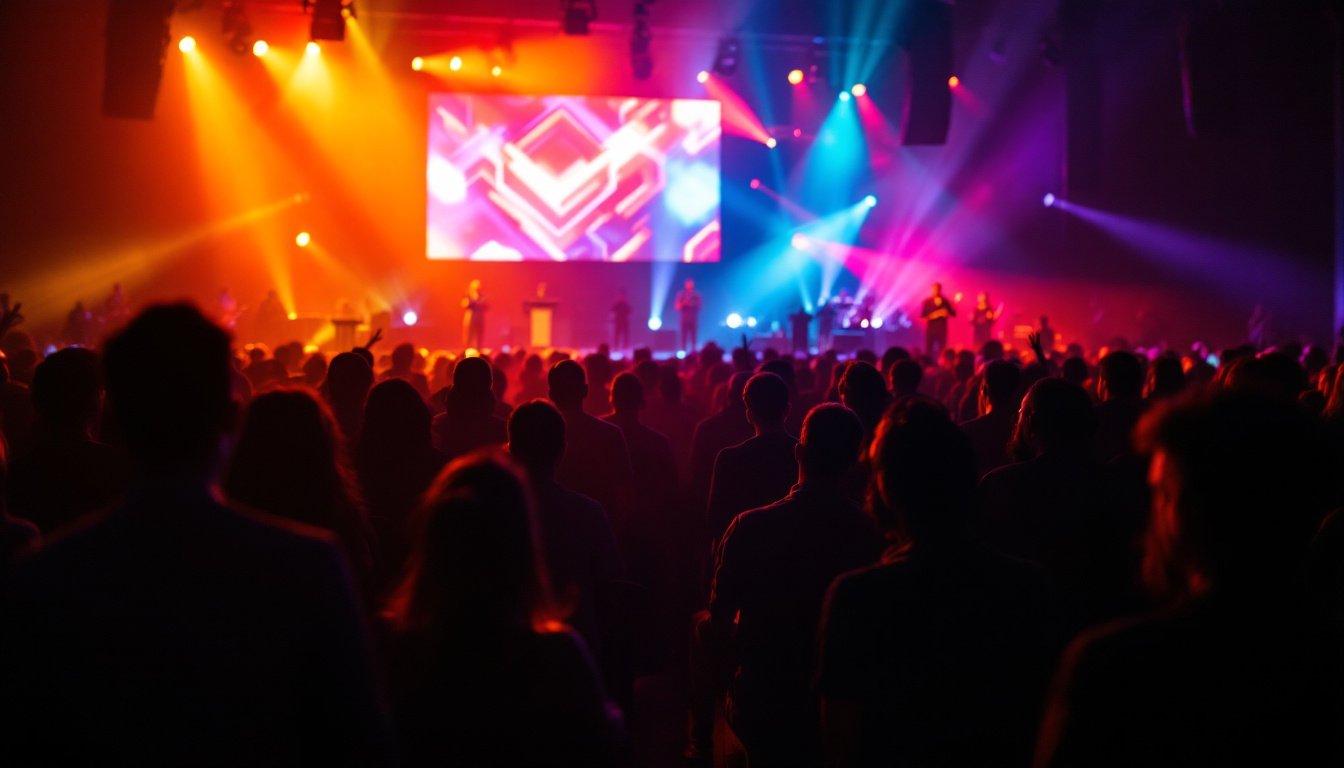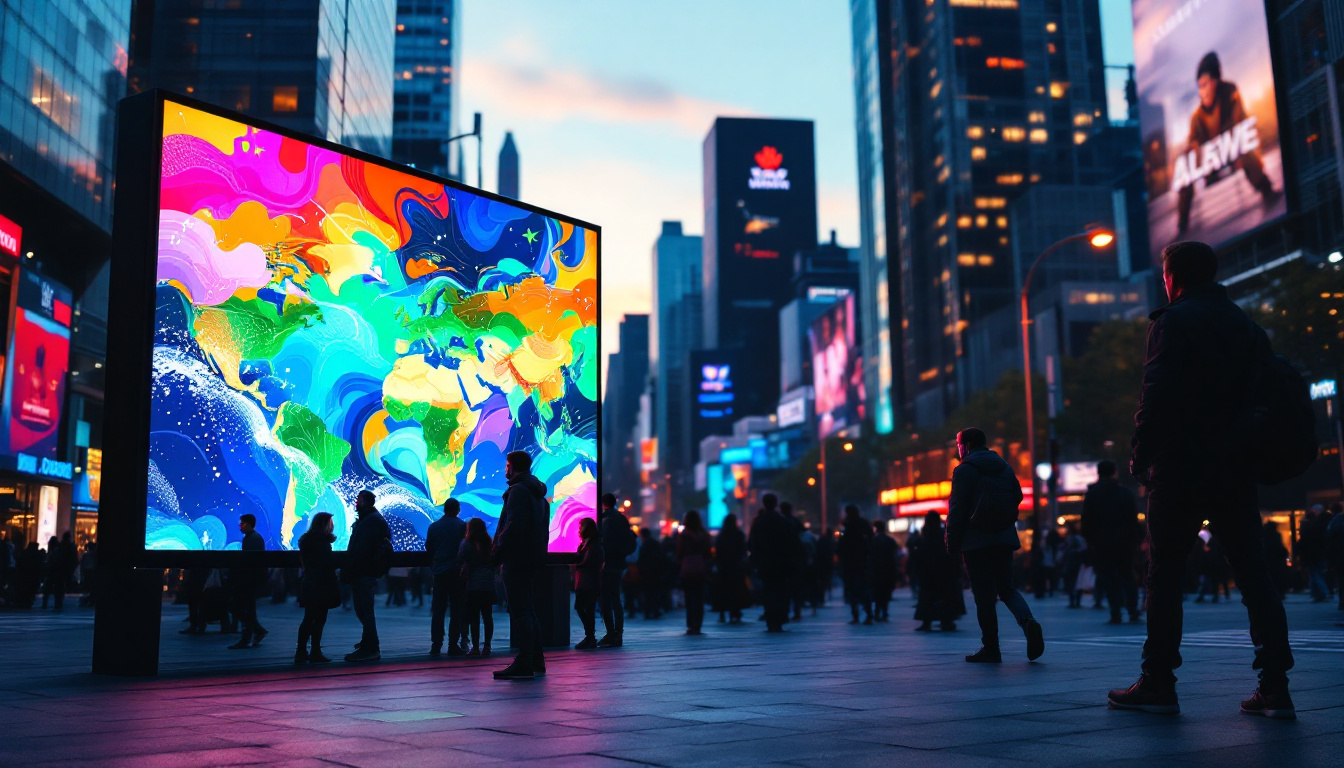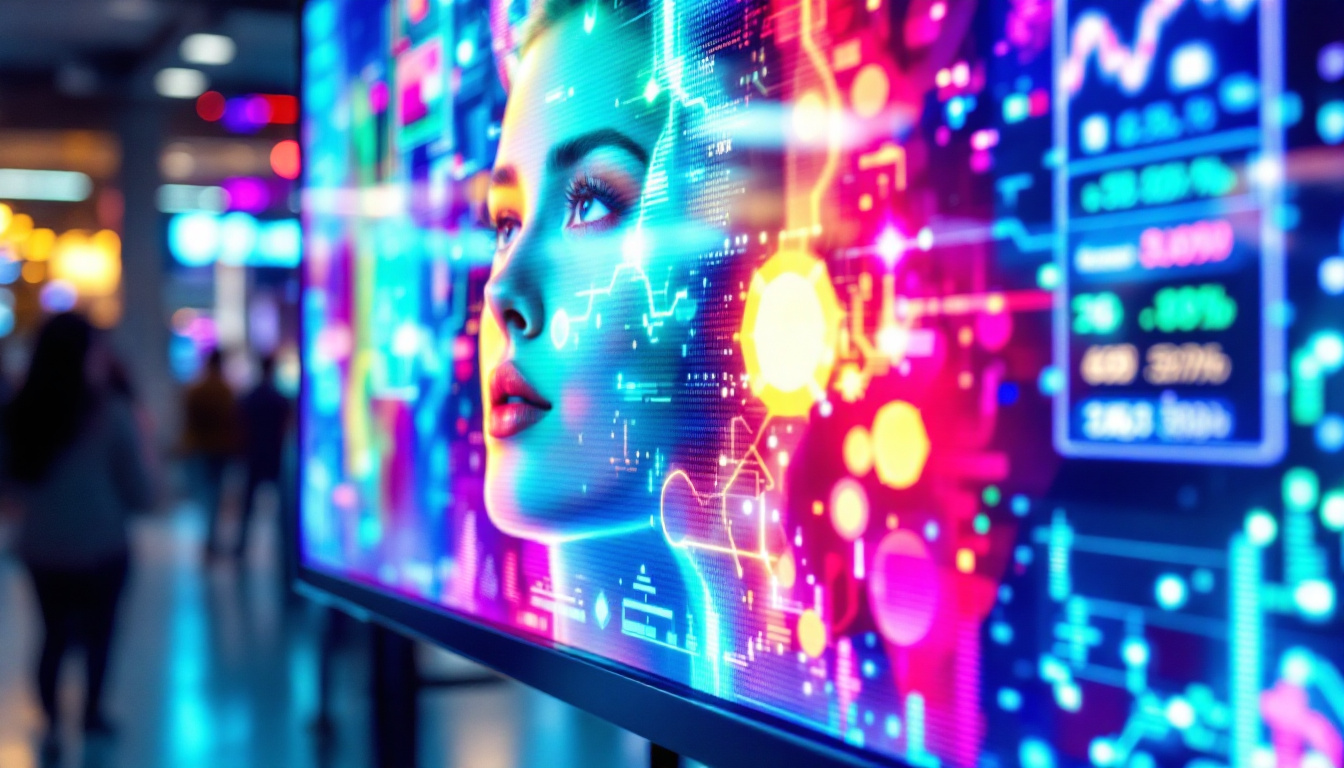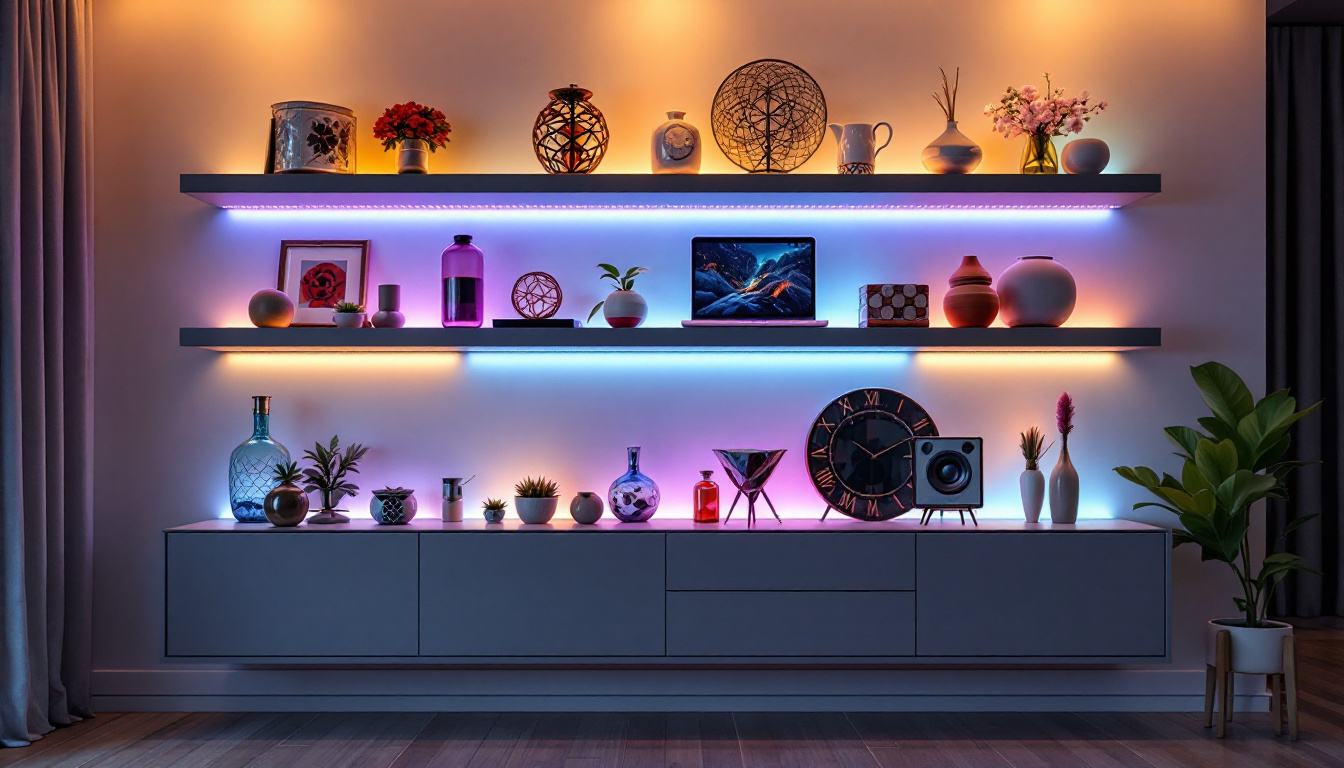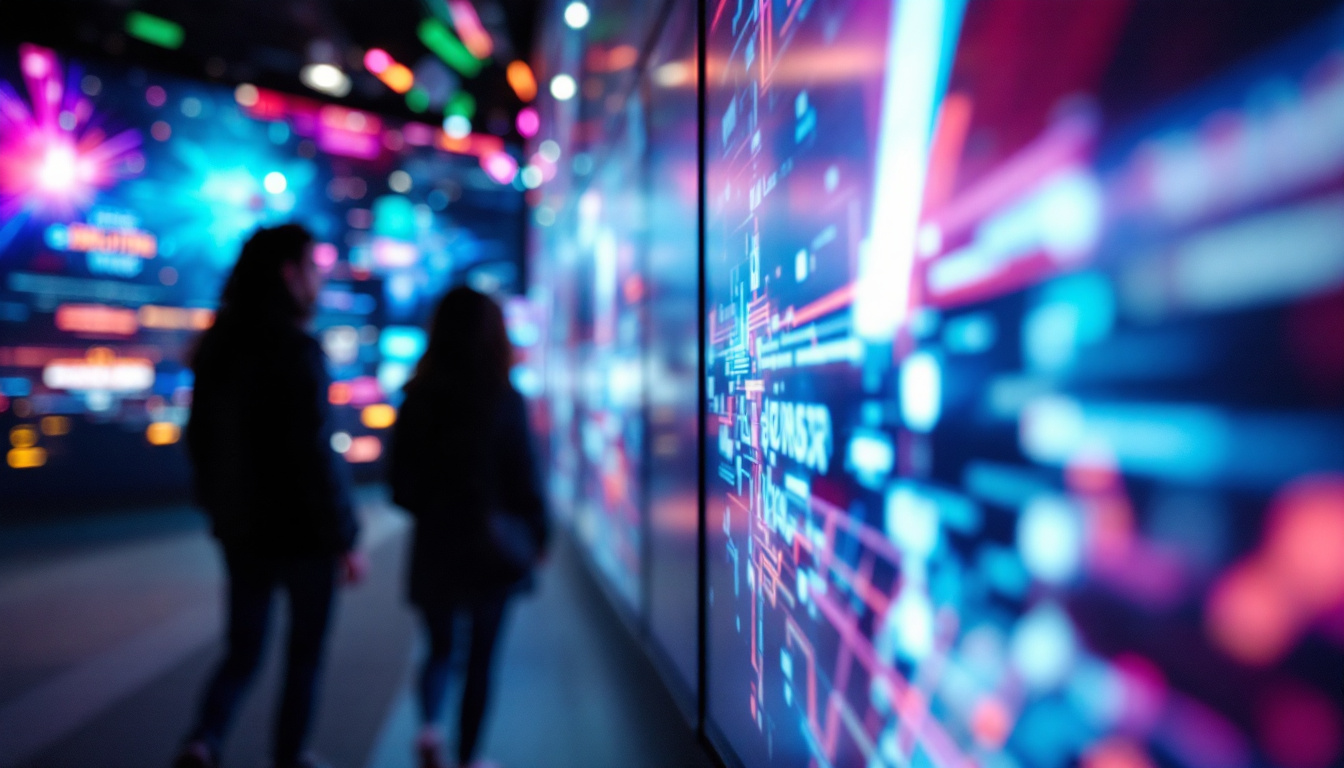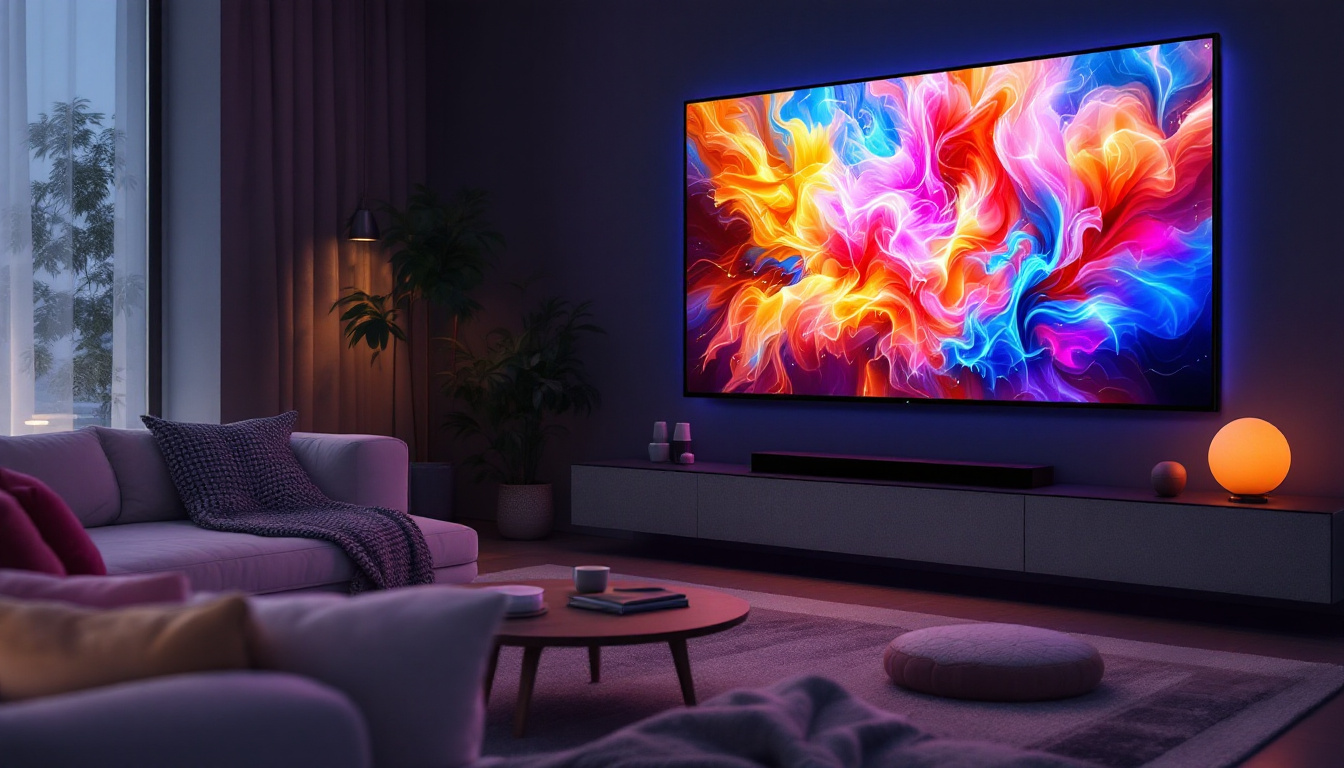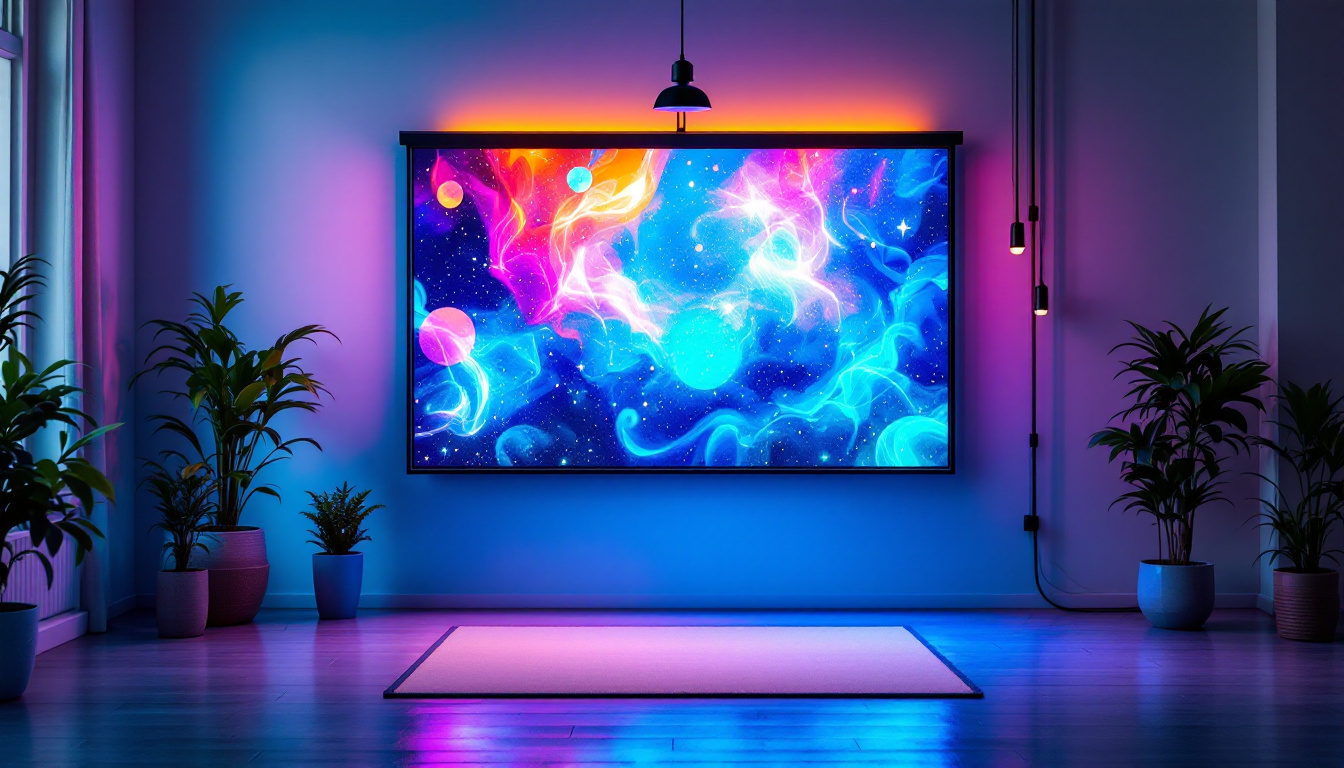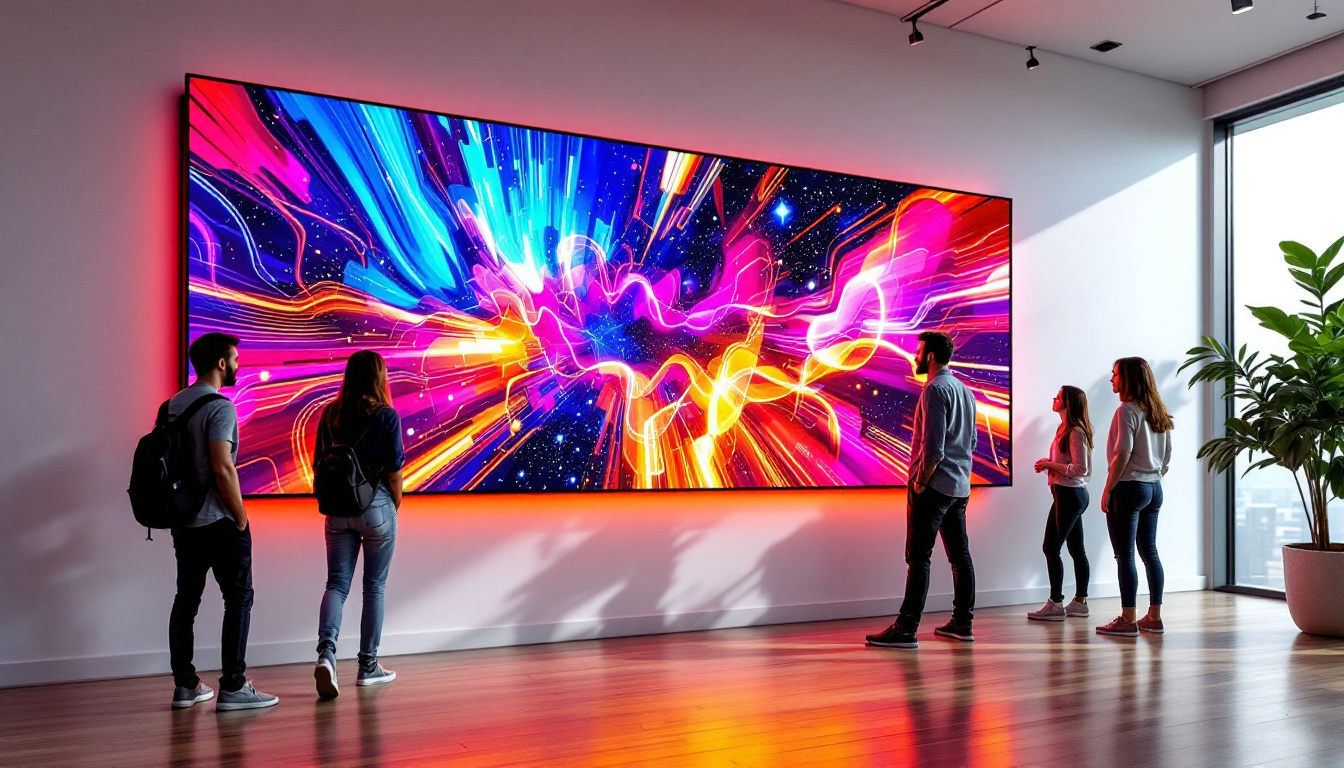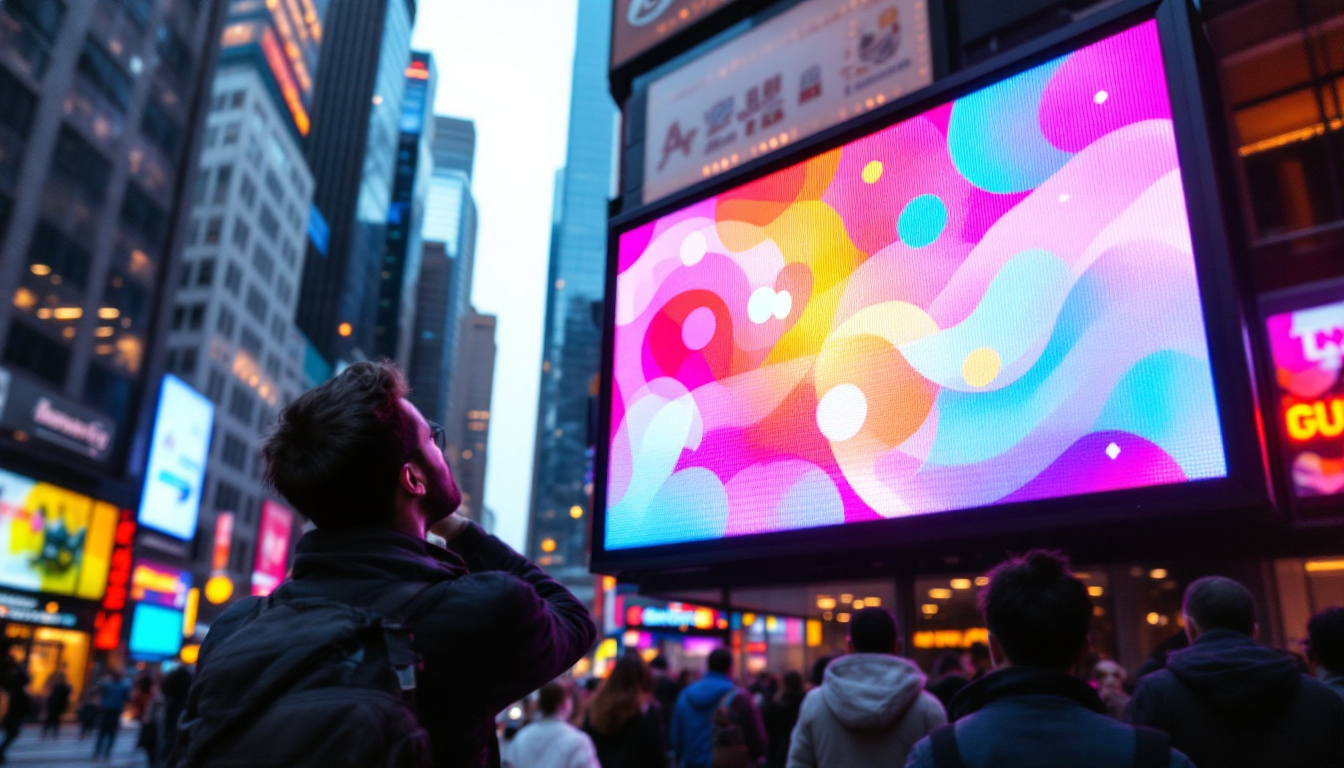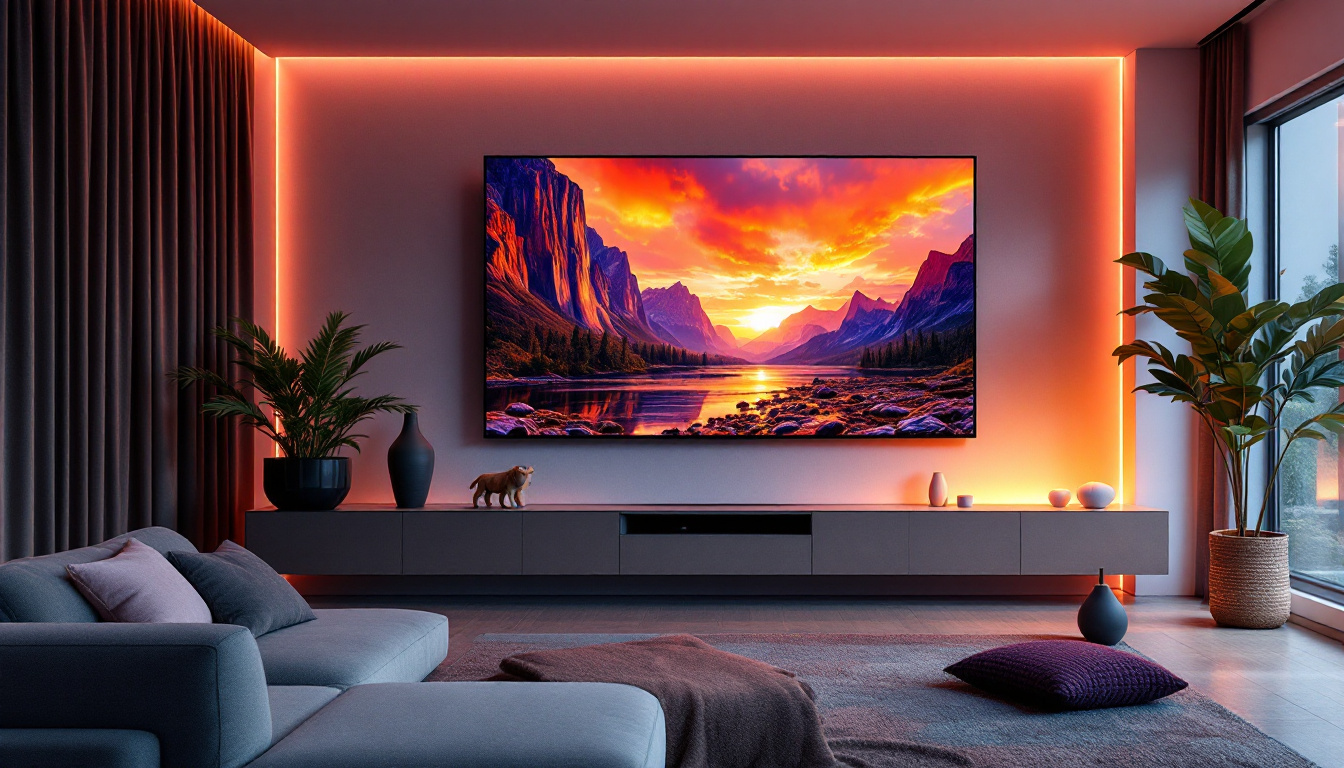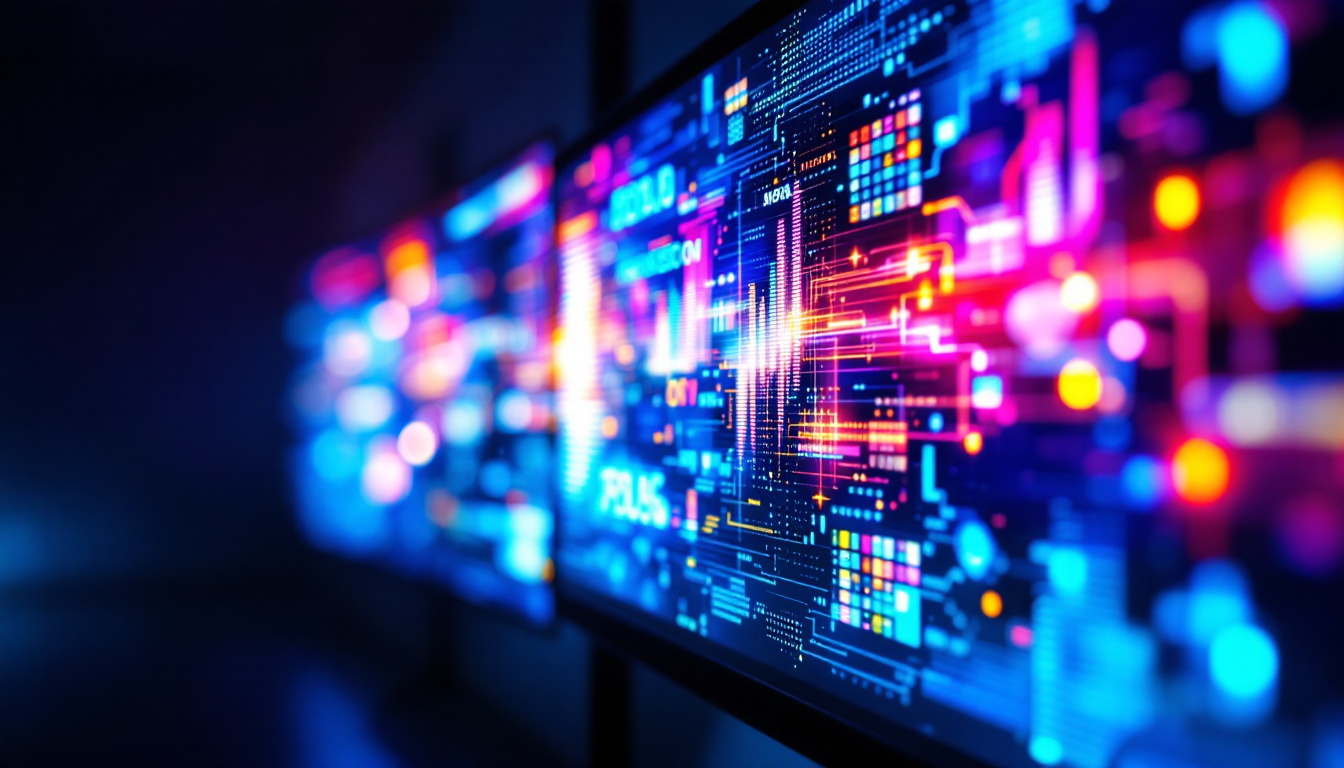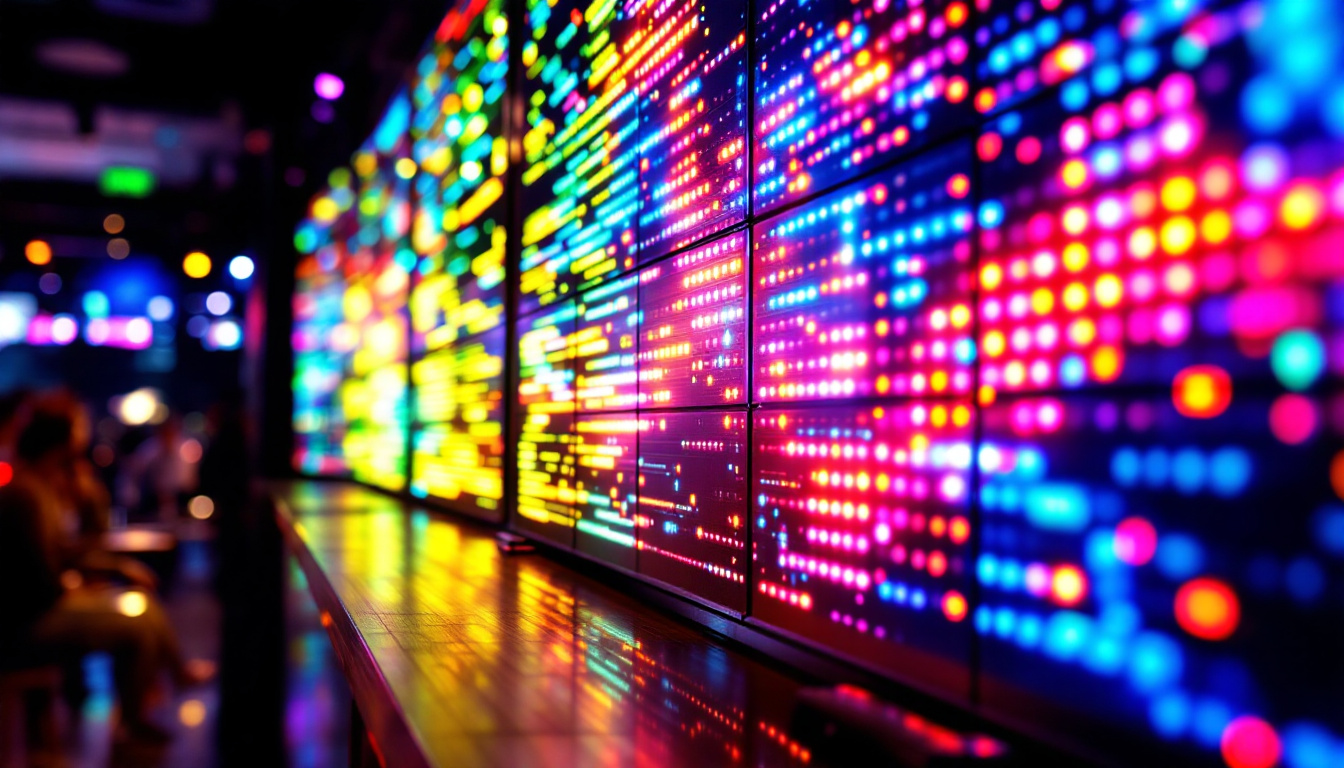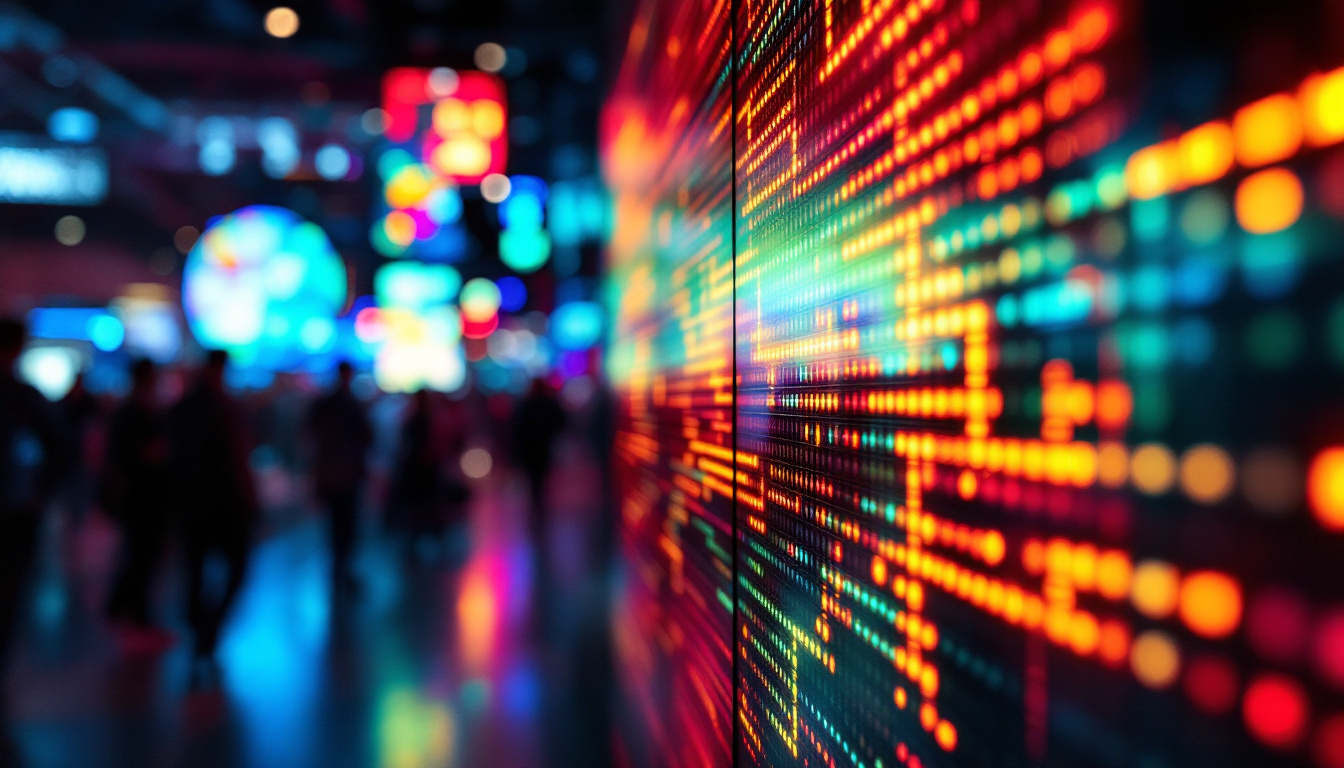Big LED Display: LED Display Explained
In today’s digital age, the use of LED displays has become increasingly prevalent across various industries. From advertising to entertainment, these vibrant screens are transforming the way information is conveyed and experienced. This article delves into the intricacies of LED displays, exploring their technology, applications, and advantages.
Understanding LED Technology
What is an LED?
LED stands for Light Emitting Diode, a semiconductor device that emits light when an electric current passes through it. Unlike traditional incandescent bulbs, LEDs are more energy-efficient and have a longer lifespan. This technology has paved the way for the development of LED displays, which utilize numerous tiny diodes to create images and videos.
The fundamental principle behind an LED is electroluminescence, where the movement of electrons in the semiconductor material generates light. This process is not only efficient but also allows for a wide range of colors and brightness levels, making LEDs ideal for display applications. Additionally, the compact size of LEDs enables innovative designs and applications, from tiny indicator lights on electronic devices to massive video walls in public spaces. Their durability and resistance to shock also make them suitable for various environments, including outdoor settings where traditional lighting might fail.
Types of LED Displays
There are several types of LED displays, each suited for different applications. The most common types include:
- Direct View LED Displays: These displays consist of individual LEDs that create images directly. They are often used in large outdoor billboards and stadium displays.
- LED Backlit Displays: These screens use LEDs to backlight an LCD panel, providing enhanced brightness and color accuracy. They are commonly found in televisions and computer monitors.
- Organic LED (OLED) Displays: OLED technology uses organic compounds that emit light when electrified. These displays are known for their deep blacks and vibrant colors, making them popular in smartphones and high-end televisions.
In addition to these common types, there are also specialized LED displays designed for specific uses. For instance, MicroLED Displays represent a cutting-edge advancement, featuring microscopic LEDs that can create stunningly high-resolution images with exceptional brightness and contrast. This technology is still emerging but holds great promise for future applications in both consumer electronics and professional displays. Furthermore, Transparent LED Displays are gaining traction in retail environments, allowing for captivating advertising while maintaining visibility through the screen, merging digital content with the physical world in an innovative way.
Moreover, the versatility of LED technology extends beyond visual displays. LED lighting has transformed the way we illuminate our spaces, offering customizable color temperatures and dimming capabilities that enhance ambiance. Smart LED systems can be integrated with home automation, allowing users to control lighting remotely, schedule changes, and even sync with music or events, creating immersive experiences. As the technology continues to evolve, the potential applications for LEDs seem limitless, influencing everything from architecture to art installations.
Applications of LED Displays
Advertising and Marketing
One of the most prominent applications of LED displays is in advertising. Businesses utilize large LED screens to showcase advertisements, promotions, and brand messages in high traffic areas. The brightness and clarity of LED displays ensure that content remains visible even in direct sunlight, making them an effective tool for outdoor advertising.
The dynamic nature of LED displays allows for changing content in real-time, enabling marketers to tailor messages based on audience demographics or current events. This flexibility can significantly enhance engagement and conversion rates. For instance, during major sporting events, brands can adjust their advertisements to resonate with the excitement of the moment, capturing the attention of fans and creating a memorable association with their products.
Moreover, LED displays can integrate interactive elements, such as QR codes or social media feeds, encouraging direct consumer interaction. This not only boosts brand visibility but also fosters a sense of community among consumers who engage with the content. As technology advances, the potential for augmented reality (AR) applications on LED screens is also emerging, allowing brands to create even more immersive experiences that captivate audiences in innovative ways.
Entertainment and Events
LED displays have revolutionized the entertainment industry, providing immersive experiences at concerts, festivals, and sporting events. Large LED screens are often used to display live feeds, graphics, and animations, enhancing the overall experience for attendees.
In addition to live events, LED technology is also employed in theaters and cinemas. The use of LED walls can create stunning visual effects, drawing audiences into the narrative and elevating the storytelling experience. The versatility of LED technology allows for seamless transitions between scenes, making it possible to create dynamic backdrops that adapt to the mood of the performance. This capability not only enhances the visual appeal but also supports the artistic vision of directors and producers.
Furthermore, LED displays are increasingly being used in theme parks and attractions, where they contribute to immersive environments that transport visitors to different worlds. From interactive rides featuring LED screens that react to guest movements to large-scale installations that create breathtaking visual spectacles, the integration of LED technology in entertainment continues to push creative boundaries.
Public Information and Transportation
LED displays serve a crucial role in conveying public information, particularly in transportation hubs. Airports, train stations, and bus terminals utilize LED screens to provide real-time updates on schedules, arrivals, and departures. The clarity and visibility of these displays ensure that passengers receive accurate information promptly.
Furthermore, LED displays are used in road signage to convey important traffic information, alerts, and directions. Their ability to change messages quickly makes them invaluable for enhancing road safety and traffic management. In urban areas, LED displays can be programmed to provide live updates on traffic conditions, helping drivers make informed decisions about their routes. Additionally, these displays can be used for public service announcements, such as weather alerts or emergency notifications, ensuring that critical information reaches the public swiftly and effectively.
As cities continue to evolve, smart LED displays are being integrated into smart city initiatives, where they can interact with other digital systems to provide a cohesive flow of information. This interconnectedness not only improves the efficiency of public transport systems but also enhances the overall experience for commuters, making travel more convenient and informed.
Advantages of LED Displays
Energy Efficiency
One of the primary advantages of LED displays is their energy efficiency. Compared to traditional display technologies, LEDs consume significantly less power, which translates to lower operational costs. This efficiency is particularly beneficial for large-scale installations, where energy savings can amount to substantial financial benefits over time.
Moreover, the long lifespan of LED displays—often exceeding 50,000 hours—reduces the need for frequent replacements, further contributing to their cost-effectiveness.
High Brightness and Visibility
LED displays are known for their exceptional brightness, making them suitable for both indoor and outdoor environments. The high luminance levels ensure that content remains visible even under challenging lighting conditions, such as direct sunlight or bright indoor lights.
This visibility is crucial for applications where clear communication is essential, such as in advertising and public information displays. The ability to maintain clarity and vibrancy in various conditions sets LED displays apart from other display technologies.
Versatility and Customization
LED displays offer remarkable versatility, allowing for various sizes, shapes, and configurations. This adaptability enables businesses and organizations to create customized solutions tailored to their specific needs.
Whether it’s a massive outdoor billboard, a sleek indoor screen, or a unique curved display, LED technology can be adapted to fit any space or aesthetic requirement. This level of customization enhances the visual impact of installations, making them more engaging for audiences.
Challenges and Considerations
Initial Investment Costs
While LED displays offer numerous advantages, the initial investment can be a barrier for some organizations. The cost of purchasing and installing LED technology can be higher than traditional display options. However, it is essential to consider the long-term savings associated with energy efficiency and reduced maintenance costs.
Organizations should conduct a thorough cost-benefit analysis to determine the return on investment (ROI) before committing to an LED display installation. In many cases, the benefits far outweigh the initial costs.
Maintenance and Technical Expertise
Although LED displays are known for their durability, they still require regular maintenance to ensure optimal performance. This includes cleaning, software updates, and occasional repairs. Organizations may need to invest in technical expertise or training for staff to manage these tasks effectively.
Moreover, as technology evolves, keeping up with the latest advancements in LED displays may require additional investments in training and equipment. Organizations should factor in these ongoing costs when planning their LED display strategy.
The Future of LED Displays
Technological Advancements
The future of LED displays is promising, with ongoing advancements in technology. Innovations such as microLED and miniLED are paving the way for even higher resolution displays, improved color accuracy, and enhanced energy efficiency. These developments are expected to expand the applications of LED technology across various sectors.
Furthermore, as the Internet of Things (IoT) continues to grow, the integration of LED displays with smart technologies will enable more interactive and personalized experiences. This evolution will enhance the functionality of LED displays, making them even more valuable for businesses and consumers alike.
Environmental Considerations
As sustainability becomes a priority for many organizations, the environmental impact of LED displays is a growing concern. Fortunately, LED technology is inherently more eco-friendly than traditional display options, consuming less energy and producing less waste.
Manufacturers are also focusing on developing recyclable materials and reducing the carbon footprint associated with production. As the industry evolves, it is likely that LED displays will become even more sustainable, aligning with global efforts to combat climate change.
Conclusion
LED displays have transformed the landscape of visual communication, offering unparalleled brightness, energy efficiency, and versatility. Their applications span various industries, from advertising to public information, making them an essential tool in today’s digital world.
While challenges such as initial investment costs and maintenance exist, the long-term benefits of LED technology often outweigh these concerns. As advancements continue to shape the future of LED displays, organizations that embrace this technology will be well-positioned to engage their audiences effectively and sustainably.
In summary, understanding LED displays is crucial for anyone looking to leverage this technology for business or personal use. With their myriad advantages and potential for future growth, LED displays are undoubtedly a key player in the evolution of visual communication.
Discover LumenMatrix LED Display Solutions
Ready to elevate your visual communication strategy with the latest in LED display technology? LumenMatrix is at the forefront of creating immersive and dynamic visual experiences tailored to your needs. From Indoor and Outdoor LED Wall Displays to innovative solutions like Vehicle LED Displays, LED Posters, and Transparent LED Displays, our products are designed to captivate your audience and amplify your message. Experience the future of digital signage with LumenMatrix and transform your space into a vibrant canvas of possibilities. Check out LumenMatrix LED Display Solutions and join the revolution in visual storytelling.

